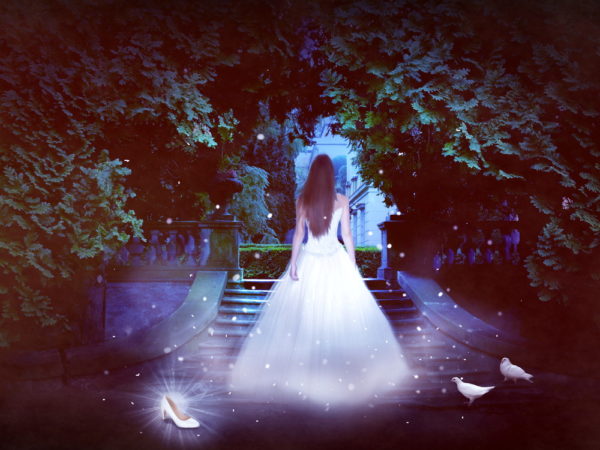A gleaming clock adorned with precious gems loomed majestically over the ballroom. Cinderella glanced up at it anxiously.
“Oh, dear,” she thought, “11:45. In 15 minutes, my coach shall become a pumpkin. My horses shall become rats who, for some reason, talk and sew and wear tiny clothes. My gown shall become tattered rags.”
Cinderella was a pragmatic young woman, and she knew that in reality, these things would not happen. Vehicles did not become gourds. Large equestrian animals did not transfigure into small verbal rodents. Clothing did not magically transform – except perhaps during the journey between the shop dressing room, where they looked lovely, and her bedroom’s full-length mirror, where they seemed to have a bulge here, and a pull there.
No, Cinderella did not expect any of these things to happen in reality; instead, she meant them as a metaphor.
You see, Cinderella was an extroverted introvert. What this meant was that she was, literally and figuratively, the belle of the ball in most social situations, but she had a finite amount of energy.
Let’s talk about introversion and extroversion.
Most people misunderstand the concept of the introvert/ extrovert spectrum. In our common vernacular, an extrovert is someone charismatic and outgoing, someone who has social graces and knows how to “work a room”. An introvert, by contrast, is someone who is quiet and bookish, fumblingly awkward in social settings, and a bit reclusive or aloof.
While some people fit this description, a lot of people don’t… and that’s because the premise is wrong. Introversion and extroversion have very little to do with how well someone performs in social situations. What it actually has to do with is energy – how people obtain it, what depletes it, and what people need in order to recharge their batteries when they’re feeling low.
An extrovert gets their energy from engaging with other people. If they’re feeling kind of “blah”, what they really need is to hoist themself out of the house, and go interact with folks – a party, a dinner, maybe even a busy subway train. Too much time alone will make a “hard extrovert” feel tired and depleted.
By contrast, an introvert gets their energy from quiet, reflective alone time. If they’re feeling overloaded, their energy will deplete rapidly, like plugging a blow dryer into a sensitive electric outlet. This doesn’t mean introverts are misanthropic; rather, it means they need to be judicious about selecting social settings and interactions, because their energy reserves are precious and limited commodities.
So what is an extroverted introvert?
Someone you know probably fits the following description:
You think of them as being a “people person” who knows how to “work a room”. They make jokes, and everyone laughs. They tell stories, and everyone listens raptly. When they arrive at an event, someone declares, “ah, now it’s a party!” And inside, they are closely guarding the calibration of their energy level. When it starts to dip, they think, “okay, I’d better make my exit… I’m about 15 minutes from becoming overloaded and kind of irritable.”
Maybe one of these people has told you, “you know, I’m actually a pretty extreme introvert.” And perhaps you have said, “no way, you’re way too outgoing to be an introvert.”
A lot of extroverted introverts feel very misunderstood. Because they look so much like extroverts on the outside, their introvert needs often go unmet – even when they directly ask for what they need. When they say, “hey, let’s leave in 10 minutes,” people often don’t take them very seriously… but what they may really mean is, “I have about 10 minutes before I have an internal meltdown, and become very impatient and irritable.”
So let’s circle back to Cinderella.
If Cinderella is an extroverted introvert, she may be able to turn on the charm, smile gregariously, and woo the prince. She can probably manage her rude, evil stepsisters with grace and ease, because she’s good with people.
But when she feels her energy begin to wane, it means she’s given all the energy she can spare. She’s danced and chatted and socialized. And now, at a quarter to midnight, she knows she’s about out of time.
And when that clock strikes 12, Cinderella has to run away so fast that she misplaces a shoe… or else she just might turn into a pumpkin.

Thank you, thank you. I’m so glad people are finally starting to talk about people like me 🙂 It’s nice to know that I’m not completely crazy when although I love being around people, I only have so much to give before… how did you put it? Meltdown. I’ve always thought about it as a random turn to crazy and cranky… for no good reason. I can see myself getting aboard the grouchy train, but no matter what I do, it seems impossible to stop. Thank you for writing about this to help me realize I’m not entirely alone in these feelings.
Wow! I learn so much when I read your blogs. You are quite a writer. If you had more time (LOL), you could have another career. You are a fantastic writer.